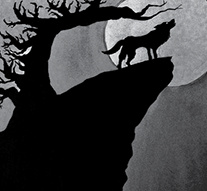Lunar Vampire Chronicles
ANCIENT WARS
BOOK 3

H.S. Darke
Copyright 2017 by H.S. Darke.
ISBN: Softcover 978-1-5245-7504-5
eBook 978-1-5245-7503-8
All rights reserved. No part of this book may be reproduced or transmitted in any form or by any means, electronic or mechanical, including photocopying, recording, or by any information storage and retrieval system, without permission in writing from the copyright owner.
This is a work of fiction. Names, characters, places and incidents either are the product of the authors imagination or are used fictitiously, and any resemblance to any actual persons, living or dead, events, or locales is entirely coincidental.
Any people depicted in stock imagery provided by Thinkstock are models, and such images are being used for illustrative purposes only.
Certain stock imagery Thinkstock.
Rev. date: 09/06/2017
Xlibris
1-888-795-4274
www.Xlibris.com
734215
A Note on the Text:
Throughout the text, the use of italics serves several purposes, all with the intention of better conveying circumstance and tone, and creating a more immersive experience for the reader. The following examples offer a helpful guide to the various ways in which these italicized sections ap pear:
To make clear that a persistent condition exists. For example, that which would be in the present tense Vampires loved blood becomes Vampires love b lood.
To indicate a tone (usually sarcastic), implying that the word that is italicized has a meaning other than its face-value meaning within its context: Helen was a nice girl becomes Helen was a nice girl.
To denote a word or words that would normally be placed in quotation marks because they are an alternate of another word or phrase. For example, He preferred to go by John becomes He preferred to go by John.
To indicate dialogue within dialogue, replacing the single quote: I said, Where Sam at? I dont see her? Bitch tried to act like, I got her here on my cellphone becomes I said, where Sam at? I dont see her? Bitch tried to act like, I got her here on my cellphone ....
To demarcate dreams, visions, poetry, prophesies, letters, internally spoken thoughts, story or commentary within a story, or to indicate emph asis.
To note special and rarely used names of charactersholy n ames.
To denote dialogue when the identity of the speaker, their exact words, or the number of times the words have been spoken is unknown. For example, People say, Dont go into that room.
To indicate use of the conditional tense: She would say, I need the money to buy the room..
To indicate when someone is speaking in a sacred language, and note its translat ions.
To illustrate that certain dialogue may have been said multiple times in the past. For example, He would ask questions like, Are you going to hang around with James when you get out?.
Footnotes
The footnotes are written such that they can be avoided without detracting from the story. They were considered of utmost importance and simply could not be done without. In an effort to maintain the meat and pacing of the story however, many pertinent bits of information were relegated to a footnote. Therefore, should the reader wish to read the footnotes, the author encourages her to do so upon a second rea ding.
Artwork contributed by Jarry Manilow & I. C. Y adik
Other images licensed through Shutterstock .com
Contents
Chapter 2 The First Vampires
circa 279,000 BCE
Chapter 3 1st Ascended War
Know Your Enemy
circa 279,000 BCE
Chapter 4 The Campaign of Illgress
circa 279,000 BCE
Chapter 5 2nd Ascended War
Draco/Debrecen
circa 275,000 BCE
Chapter 6 Nighttime Attack of the Assassins
circa 274,997 BCE
Chapter 7 The Rogue Wars
circa 250,000 BCE
Chapter 8 Ephisiostecles
circa 250,000 BCE
Chapter 9 Disposition of the Collective
circa 225,000149,008 BCE
Chapter 11 Return to Afra-ia/Africa: Jeku and
His Ministry103,000 BCE
Chapter 12 Meeting of the Three Foes
circa 100,000 BCE
Chapter 13 Where are the Humans and What To Do?
75,000 BCE to 46,000 BCE
Chapter 14 Vampire Estuator
circa 43,500 BCE
Chapter 15 3rd Ascended War
To Hit or Not to Hit
circa 43,500 BCE
Chapter 16 The Little Girl and the Wizards Cave
circa 43,500 BCE
Chapter 17 The Last Battle of Flame
circa 43,100 BCE


Chapter 1
Entombed
It was a great irony being imprisoned in that cave; released , they claimed. The narrow, nearly inaccessible entrance sat high on the cliff face of a tall mountain. It was sealed long ago, around 2,400 BCE, and so from the outside of the mountain, it was not obvious that therein lay a cave. There he sat in darkness, chained to a stone. That stone had a name. In the Dark Tongue it was OsaDar , but in English permanency; it translated quite literally into unbreakable weight . Though his hands were free, he was quite unable to defeat the chains that bound him; their maker, Menster, was skilled. His arms were kept free so that he would be able to read the Dark Lexicon that lay before him, a reminder of his real mission in life.
Mostly, however, he sat slumped against the stone, utterly forlorn, his head bowed down. Rain sometimes poured into the cave from a hole high above his head that was delved for the purpose of allowing moonlight, of allowing her, to imbue him. Many nights, it drenched his beautiful hair. No one would ever really know if it was wor king.
In this dark and damp prison, he could only wonder when they would come back for him. What had become of his friends? What did she think of him? Despite all of this, his eyes still s hone.
Arson
300,000 BCE
The Cosmic Gods watched all from a plane of existence unattainable to mere humans, whether they were Ascendeds or vampires. The laws written by the Cosmic Gods, that govern the universe, are fixed; the gods abhor that which is outside of the natural state. What occurred long ago on Earth was outside of the natural state, and it gave rise to a problem without a solution. This is, in truth, the story of that pro blem.

Around 300,000 BCE, Arson lived in a village called Mala-Din, meaning Grim Foothold, located far to the southwest of modern-day Syria and just to the east of Mt. Denay-Ra. That mountain, which bore a name meaning Aimed at the Sun and which would much later be called Mt. Hermon, was located between the modern-day border of Syria and Lebanon. During that era, the area was much more fertile than it came to be in modern times. Arson was something of an eccentric man. He always saw the world differently than those around him and studied what esoteric subjects he could. He was never satisfied with doing things the way others did them.
When he was thirty-five years old, Arson decided to make a self-imposed pilgrimage of sorts into the wilderness, carrying with him only a waterskin and some salted meats. His goal was to walk toward the sunlight until he could walk no more, then begin the journey back home. He did indeed walk towards his destination until utterly spent, but then found himself lost and bewildered, unable to make his way back home. In his misery and despair, he couldnt even find comfort using what woodcraft he knew, and the cold defeated him at night. He quickly ran out of food and became too exhausted to acquire more, but he still had an ample supply of water from a nearby spring he there named Ula-May-Uda, meaning The Earths Tears, or more literally, The Earth crying, these fell. It was the purest spring in the world, but has long since disappeared. Despite this, however, water offered only one kind of sustenance; Arson was starving to d eath.
Next page














